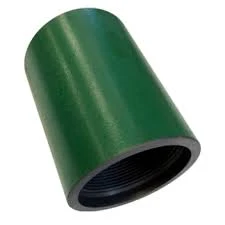- Afrikaans
- Albanian
- Amharic
- Arabic
- Armenian
- Azerbaijani
- Basque
- Belarusian
- Bengali
- Bosnian
- Bulgarian
- Catalan
- Cebuano
- Corsican
- Croatian
- Czech
- Danish
- Dutch
- English
- Esperanto
- Estonian
- Finnish
- French
- Frisian
- Galician
- Georgian
- German
- Greek
- Gujarati
- Haitian Creole
- hausa
- hawaiian
- Hebrew
- Hindi
- Miao
- Hungarian
- Icelandic
- igbo
- Indonesian
- irish
- Italian
- Japanese
- Javanese
- Kannada
- kazakh
- Khmer
- Rwandese
- Korean
- Kurdish
- Kyrgyz
- Lao
- Latin
- Latvian
- Lithuanian
- Luxembourgish
- Macedonian
- Malgashi
- Malay
- Malayalam
- Maltese
- Maori
- Marathi
- Mongolian
- Myanmar
- Nepali
- Norwegian
- Norwegian
- Occitan
- Pashto
- Persian
- Polish
- Portuguese
- Punjabi
- Romanian
- Russian
- Samoan
- Scottish Gaelic
- Serbian
- Sesotho
- Shona
- Sindhi
- Sinhala
- Slovak
- Slovenian
- Somali
- Spanish
- Sundanese
- Swahili
- Swedish
- Tagalog
- Tajik
- Tamil
- Tatar
- Telugu
- Thai
- Turkish
- Turkmen
- Ukrainian
- Urdu
- Uighur
- Uzbek
- Vietnamese
- Welsh
- Bantu
- Yiddish
- Yoruba
- Zulu
coupling for tubing
Understanding Coupling for Tubing A Comprehensive Overview
In the realm of tubing applications, particularly in oil and gas, water systems, and various industrial sectors, the term coupling is of paramount importance. Couplings serve as vital components that connect two or more segments of tubing, ensuring the effective transmission of fluids or gases while maintaining structural integrity under pressure.
What is a Coupling?
A coupling is a mechanical device used to connect two pieces of tubing or pipes. The primary function of a coupling is to provide a reliable and leak-proof connection that enables the flow of fluids or gases from one segment of tubing to another. In applications involving high pressures or temperatures, couplings must be engineered to meet specific standards, ensuring they can withstand the operational environments they are placed in.
Types of Couplings
There are several types of couplings used in tubing applications, each designed for particular conditions and requirements. Some common types include
1. Threaded Couplings These are screwed onto the ends of the tubing segments, making them easy to assemble and disassemble. They are commonly used in low-pressure applications.
2. Welded Couplings These involve welding the tubing ends together, providing robust connections suitable for high-pressure situations. Welded couplings are often used in gas and oil pipelines where safety is critical.
coupling for tubing

3. Flanged Couplings Flanged couplings consist of valves and flanges that are bolted together. They provide a strong and secure connection, making them ideal for high-pressure systems.
4. Compression Couplings These use a compressive force to hold the two tubing segments together. They are versatile and commonly employed in various plumbing and heating applications.
Material Considerations
The choice of material for couplings is another critical aspect. Common materials include stainless steel, carbon steel, and plastics like PVC or CPVC. The material selected depends on several factors, including the chemical properties of the fluid being transported, temperature conditions, and the required durability. For instance, stainless steel is favored for its resistance to corrosion, making it ideal for applications in hostile environments.
Importance of Proper Installation
The efficacy of a coupling is highly dependent on proper installation. Incorrect installation can lead to leaks, structural failure, and significant safety hazards. Therefore, it is crucial to follow manufacturer guidelines and industry standards during the installation process. Regular maintenance and inspections of the couplings are also essential to prolong their lifespan and ensure the safety of the entire system.
Conclusion
In summary, coupling for tubing is a crucial component in a wide array of industries, ensuring the safe and efficient transfer of fluids and gases. Understanding the various types of couplings, selecting the appropriate materials, and ensuring proper installation are vital to achieving optimal performance and reliability. As industries continue to evolve and face new challenges, advancements in coupling technology will play an integral role in enhancing safety, efficiency, and sustainability in fluid transport systems. This underscores the importance of ongoing education and awareness regarding tubing couplings for professionals across various sectors.
-
Tubing Pup Joints: Essential Components for Oil and Gas OperationsNewsJul.10,2025
-
Pup Joints: Essential Components for Reliable Drilling OperationsNewsJul.10,2025
-
Pipe Couplings: Connecting Your World EfficientlyNewsJul.10,2025
-
Mastering Oilfield Operations with Quality Tubing and CasingNewsJul.10,2025
-
High-Quality Casing Couplings for Every NeedNewsJul.10,2025
-
Boost Your Drilling Efficiency with Premium Crossover Tools & Seating NipplesNewsJul.10,2025







